LinkedIn for Nonprofits: How To Leverage Your Network
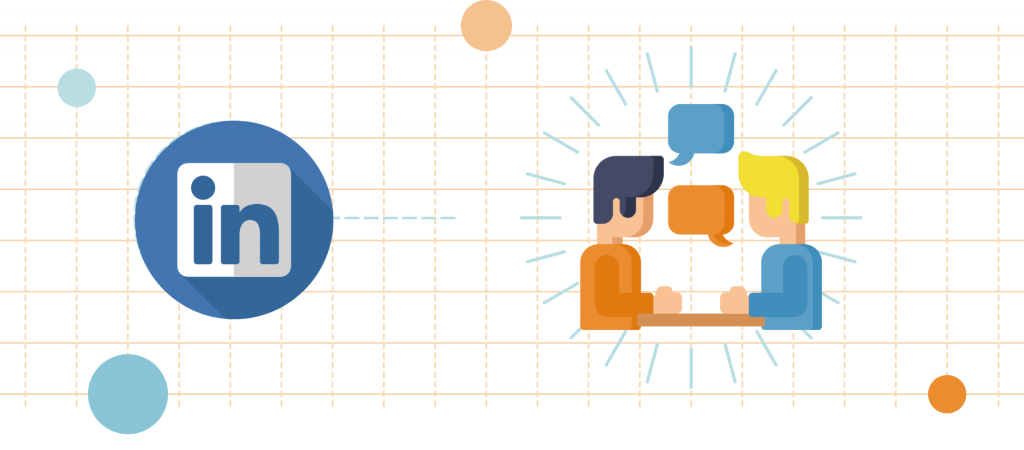

When it comes to social media strategy, Linkedin is probably not your top priority. Yet, you should consider it to increase your brand awareness, and create meaningful relationships with donors, partners, and nonprofit peers.
There’s so much more than jobs on LinkedIn. With two professionals joining every second, the biggest professional social networking site gathers tons of relationships waiting to be unlocked.
Like Facebook, Twitter, or Instagram, LinkedIn can be used to increase awareness, and establish credibility and trust for your brand. Beyond increasing your impact, the professional platform offers plenty of opportunities to nurture existing fundraising relationships and establish new ones. With the right strategy, LinkedIn can be turned into a powerful tool to boost your brand, build partnerships, and learn from your peers.
How relationships work on Linkedin
Fundraising is all about creating the right relationships with the right people. Fundraising on LinkedIn is about mapping your way to the right connections. With a network of 630 million users and 30 million companies, LinkedIn offers great opportunities at the individual and corporate giving levels.
The way connections work on Linkedin is actually very similar to real-life relationships; you’re unlikely to talk to someone you don’t know unless you’re introduced by a common connection.
Here’s a diagram to understand the LinkedIn network.
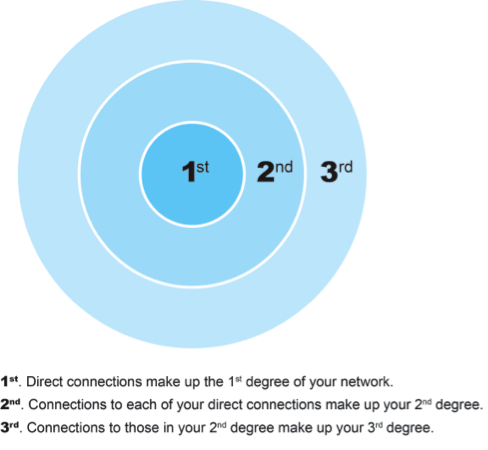

The first circle makes up your direct connections – the people you know personally or professionally.
If you keep in touch with your first-level connections, they might refer you to their own direct connections – that’s the 2nd level of your network.
3rd-level connections are connected to the 2nd level. It is harder to create relationships at this level because you don’t share direct connections. Yet, you might have common interests. In that case, you can reach them on Linkedin groups, or via shared content on your company page and your employees’ profiles.
As part of your social media strategy, LinkedIn can help you grow your network. Now, how can you make it part of your regular communication?
1. How To Turn Your Staff Into Brand Advocates
LinkedIn’s strength as a nonprofit lie in its ability to turn volunteers, employees, and alumni into powerful brand advocates. Staff members are able to share your updates with their own vast networks – opening opportunities to reach new supporters. Each interaction might not end in a donation, but the multiplier effect of sharing will definitely expand your network and unlock new relationships.
As ambassadors of your brand, staff members should link to your page in the experience section or the volunteer experience section of their LinkedIn profile. Board members should also feature how they are involved in your organization.
To optimize your brand awareness, you should ask your staff members to polish their personal profiles by adding the following elements
- A profile picture (profiles with pictures have a better chance of being seen)
- A creative headline and a personal summary. This is a space where they can speak passionately about your cause and what it means to them- there is nothing more powerful.
- A summary of their experience at your organization. You can give them a hand with this part by writing a brief and impactful summary for all your employees.
- Fill out the causes section to match the impact areas of your organization
2. How To Share Your Impact on LinkedIn
For nonprofits, LinkedIn can be used for networking and content marketing. It offers a space where you can engage with your audience by sharing relevant and educational content regularly. Each week, content in the Linkedin feed receives 9 billion impressions, although only 1% of total users share content on a weekly basis.
The LinkedIn homepage looks very similar to your Facebook feed, but there is an important difference. The Facebook algorithm prioritizes posts from your friends, family, and community. The LinkedIn algorithm bumps up fresh content it believes is relevant to you. In other words, the professional network aims to put valuable and good-quality content in front of the right audience. Essentially, this means that with the right content, you can reach people beyond your first-level connections.
Share relevant content on your LinkedIn company page
Similarly to other social media platforms, you can use Linkedin to show your work and your impact through long-form content, photos, videos, and infographics. You shouldn’t limit your account to job postings, instead share news about your campaigns, testimonials, or upcoming events.
For instance, Plan International recently posted the story of Sangeetha to inspire its audience and communicate the importance of its work.


Like Nature Conservancy of Canada, you might want to give people a look into your organization’s culture and employees’ life. The more you communicate about your work and the motivation of your team to do more good, the more people are likely to donate. In addition, showing appreciation to your staff and volunteers is always highly appreciated.
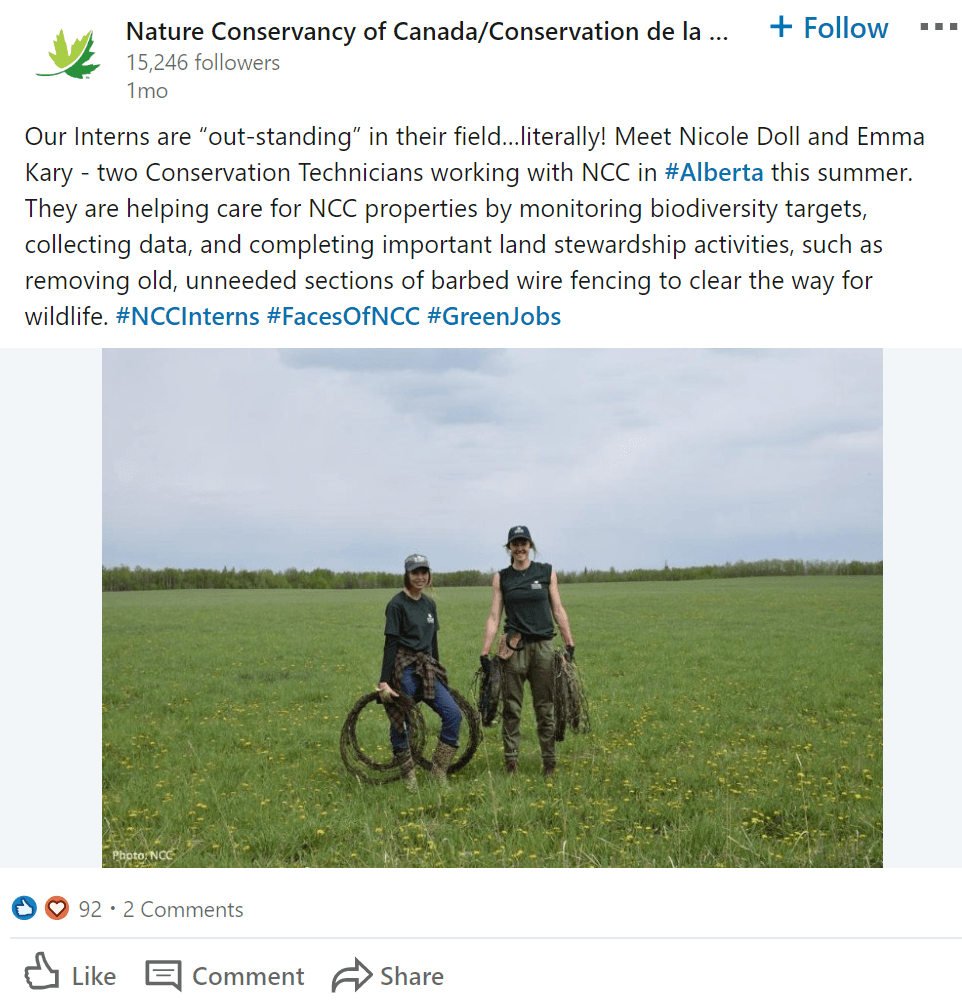

Save the Children recently mentioned the launch of a new partnership. This is a good way to show transparency and openness, additionally, it may even encourage other potential partners to reach out.
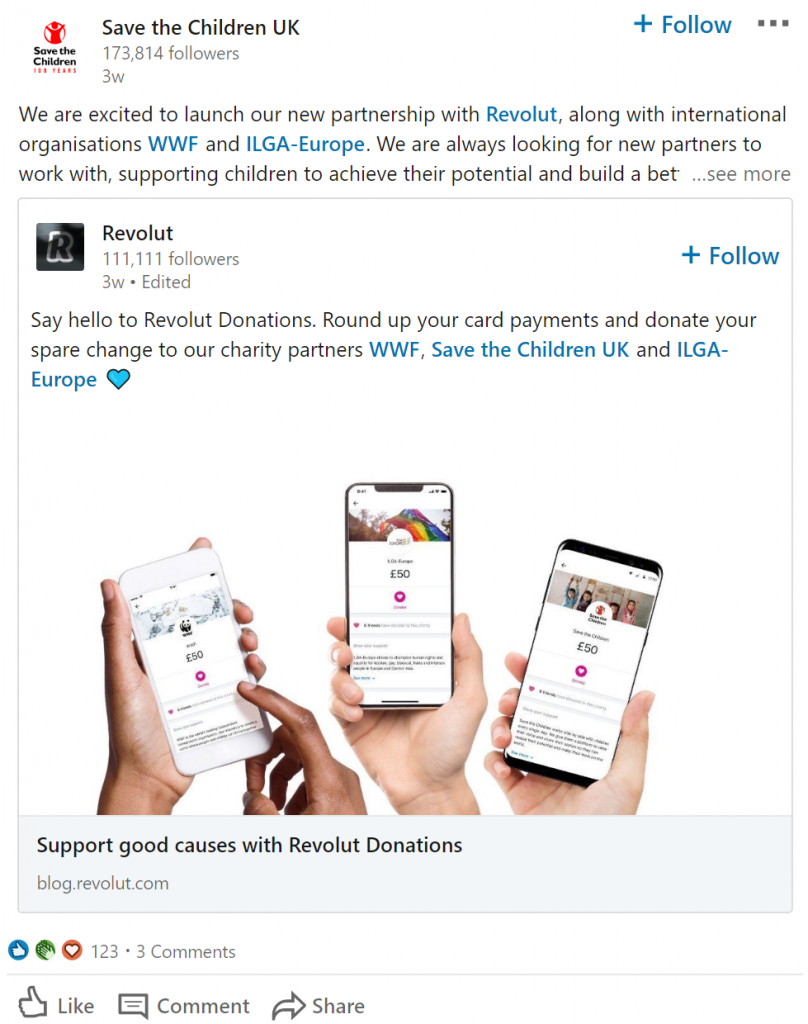

Leverage your network
People value personal relationships over interactions with an organization. To boost your brand awareness, you can ask your staff members to post content on their personal accounts.
For instance, having a high-profile employee post a long-form article on the LinkedIn Publishing Platform can help your organization build credibility. You can also summarize a recent event in a post and ask volunteers to share it with their network. To make it easier, give them a written draft they can copy and paste. Because staff members are the face of the organization, they are able to communicate passionately about the impact your team is making.
3. How To Build Strategic Partnerships
Corporate partnerships are great opportunities for nonprofits to boost their fundraising efforts. Business contributions can bring in monetary gifts but also in-kind support – for instance, corporate organizations are often looking at philanthropic projects for their employees. LinkedIn is the perfect platform to research potential partners and forge robust relationships.
Identify potential partnerships on Linkedin
First, ask yourself what type of partnership you want to build. What kind of organization do you want to work with? Determine if you are targeting CSR departments, philanthropic foundations, or local businesses. Then, identify the type of resources you need – money, services, volunteers, training, etc.
The next step is to find the right contacts by using the LinkedIn search bar. Here, you might want to use filters to narrow down the list. You should start by targeting people you have a connection to because you have a better chance of getting an answer. Tools like LinkedHelper can even help you create personalized messages for your 1st contacts on LinkedIn and help automate bulk send. Then, you can narrow the research by geographic location, company, industry, school, and interest. Next, bring your focus to businesses that seem like a natural fit for your organization – look at their company pages and their websites.
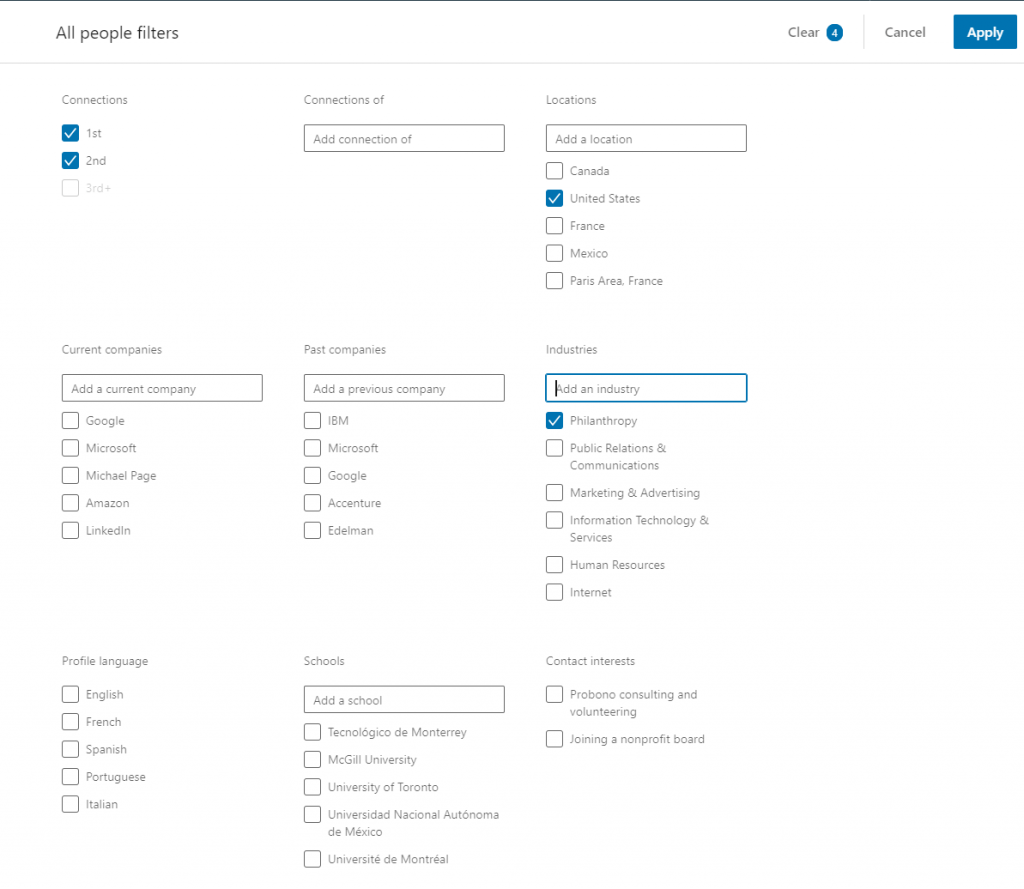

Once you come up with a list of potential partners, ask your common connection for an introduction. On LinkedIn, decision-makers tend to ignore cold outreach. According to LinkedIn experts, the response rate goes up to 80% if the person making the introduction knows the prospect well.
4. How To Use Linkedin For Learning Purposes
LinkedIn’s network offers many learning opportunities. You can use your account to regularly read updates and better understand your audience. In addition to the homepage feed, you can meet nonprofit professionals on LinkedIn groups. Groups are the doorway to fundraising tips, career advice, and networking. You can easily access tons of resources and share your own pieces of content. It is also a suitable place to ask questions and connect with peers.
Here’s a list of key LinkedIn groups for nonprofits
Non-Profit and Charity Network (19,995 members)
A group for people involved in nonprofit work to share ideas and get advice.
Guide Star — The Nonprofit Conversation (14,280 members)
A group for general discussion of nonprofit topics.
Lean Thinking for NGOs and Nonprofits (2,214 members)
An open forum to develop a network of Lean practitioners, NGO leaders, and funding organizations.
Online Fundraising for Nonprofit Organizations (11, 725 members)
A group to share content about online fundraising.
Development and Fundraising Professionals (36,980 members)
A space to get the latest news on nonprofit fundraising
Professional Nonprofit Fundraising (3,201 members)
A place for nonprofit fundraising, marketing, and communications professionals to share ideas.
Digital Marketing for Nonprofits (573 members)
A group to share nonprofit opportunities on social media, SEO, and Google Grants.
Non-Profit Marketing (94,796 members)
A to Z marketing for nonprofits.
Social Media for Nonprofit Organizations (98, 218 members)
A group to share content about social media.
Volunteer coordinators (22, 351 members)
A place to network with other volunteer coordinators and managers.
And if you can’t find what you are looking for, you can always create your own group. It is likely you will find other professionals looking for the same kind of resources.
When you understand how to use Linkedin, it can truly benefit your organization in more ways than you may have realized – you can build meaningful partnerships, connect with donors, and interact with nonprofit peers.
Follow us on Linkedin for tips about online fundraising, digital marketing, and data management.

